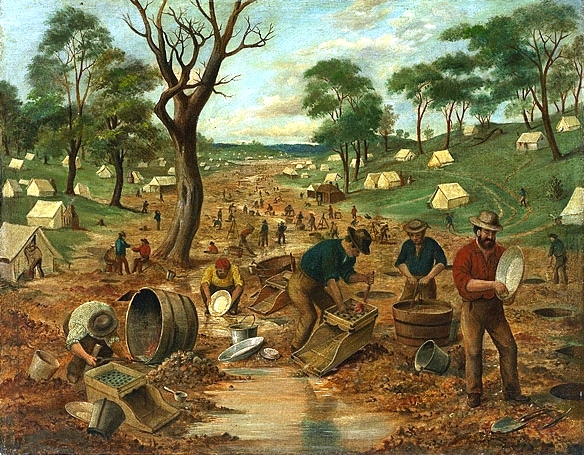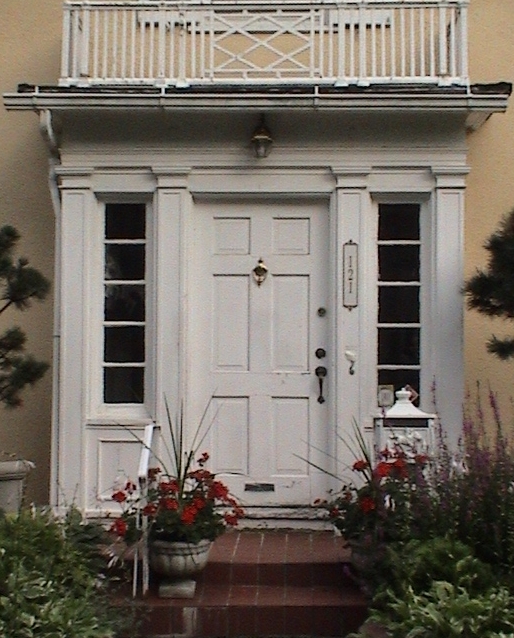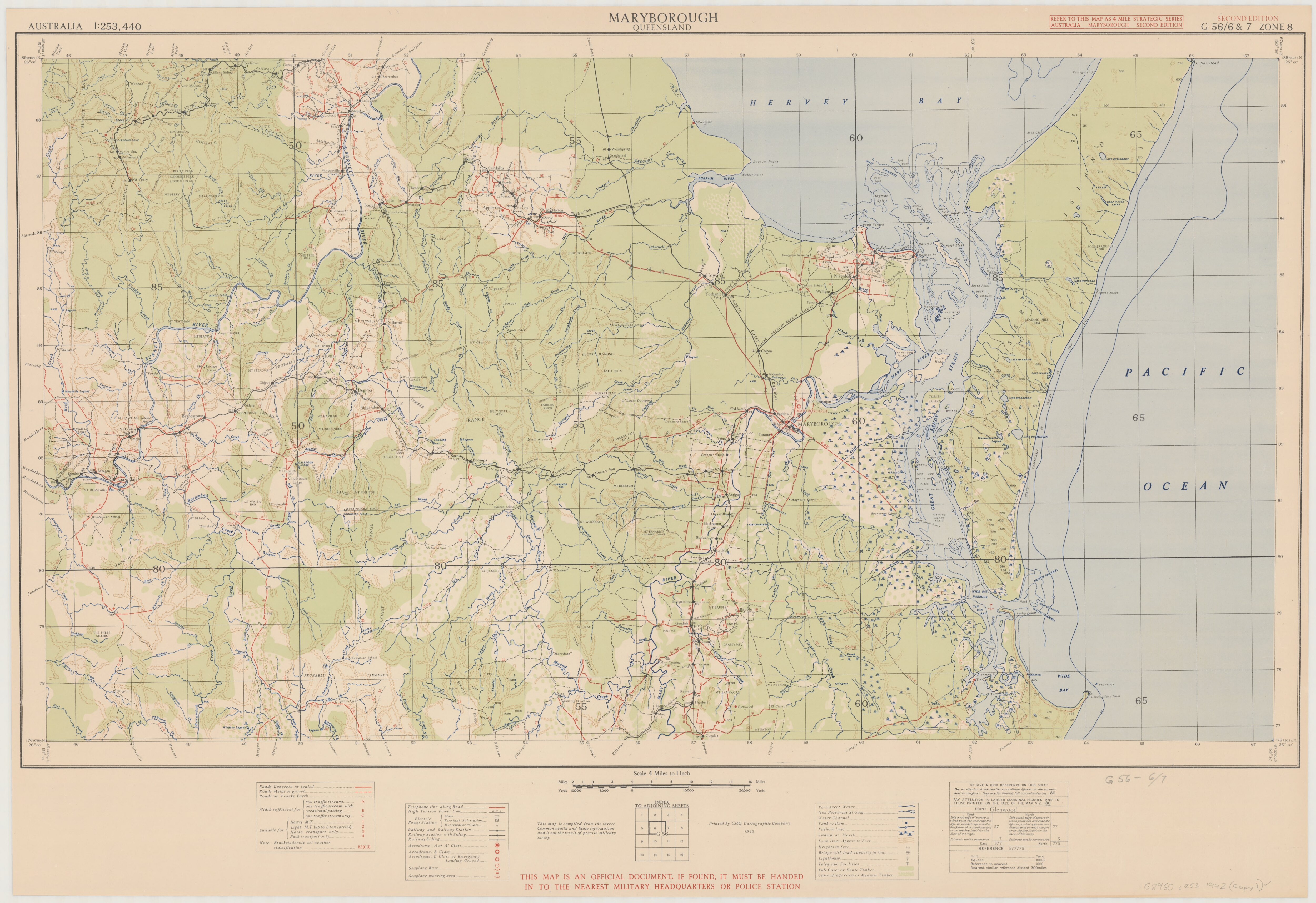|
Engineers' Arms Hotel
Engineers' Arms Hotel is a heritage-listed former hotel at 115 March Street, Maryborough, Queensland, Maryborough, Fraser Coast Region, Queensland, Australia. It was designed by Samuel Bragg and built in 1889 by Mr Caldwell. It is also known as Mayfair Boarding House. It was added to the Queensland Heritage Register on 21 October 1992. History The former Engineers' Arms Hotel in Maryborough was constructed in 1889 for Ann Dillane, to designs of Samuel Bragg, a local architect. It replaced an earlier building, also called the Engineers' Arms. Settlement at Maryborough commenced in September 1847 when George Furber established a woolstore on the south bank of the Mary River (Queensland), Mary River at the head of navigation. He was followed in June 1848 by ET Aldridge and Henry and RE Palmer, Queensland, Palmer, who established their own wharves on the opposite riverbank, at a location now known as the original Maryborough town site at Baddow. In 1850 a new town site was survey ... [...More Info...] [...Related Items...] OR: [Wikipedia] [Google] [Baidu] |
Maryborough, Queensland
Maryborough ( ) is a city and a suburb in the Fraser Coast Region, Queensland, Australia. At the 2021 Census, Maryborough had a population of 15,287. Geography Maryborough is located on the Mary River in Queensland, Australia, approximately north of the state capital, Brisbane. The city is served by the Bruce Highway. It is closely tied to its neighbour city Hervey Bay which is approximately northeast. Together they form part of the area known as the Fraser Coast. The neighbourhood of Baddow is within the west of the suburb near the Mary River. It takes its name from Baddow House, a historic property in the area (). Baddow railway station () and Baddow Island () in the Mary River also take their names from the house. History Original inhabitants, language and culture Evidence of human inhabitation of the Maryborough region stretches back to at least 6,000 years ago. The Gubbi Gubbi (Kabi Kabi) and Batjala (Butchulla) people were the original inhabitants of the r ... [...More Info...] [...Related Items...] OR: [Wikipedia] [Google] [Baidu] |
Gympie Goldfield
During the Australian gold rushes, starting in 1851, significant numbers of workers moved from elsewhere in Australia and overseas to where gold had been discovered. Gold had been found several times before, but the colonial government of New South Wales (Victoria did not become a separate colony until 1 July 1851) had suppressed the news out of the fear that it would reduce the workforce and so destabilise the economy. After the California Gold Rush began in 1848, many people went there from Australia, so the New South Wales government sought approval from the British Colonial Office for the exploitation of mineral resources, and offered rewards for finding gold. History of discovery The first gold rush in Australia began in May 1851 after prospector Edward Hargraves claimed to have discovered payable gold near Orange, at a site he called Ophir. Hargraves had been to the Californian goldfields and had learned new gold prospecting techniques such as panning and cradling. ... [...More Info...] [...Related Items...] OR: [Wikipedia] [Google] [Baidu] |
Transom (architectural)
In architecture, a transom is a transverse horizontal structural beam or bar, or a crosspiece separating a door from a window above it. This contrasts with a mullion, a vertical structural member. Transom or transom window is also the customary U.S. word used for a transom light, the window over this crosspiece. In Britain, the transom light is usually referred to as a fanlight, often with a semi-circular shape, especially when the window is segmented like the slats of a folding hand fan. A prominent example of this is at the main entrance of 10 Downing Street, the official residence of the British prime minister. History In early Gothic ecclesiastical work, transoms are found only in belfry unglazed windows or spire lights, where they were deemed necessary to strengthen the mullions in the absence of the iron stay bars, which in glazed windows served a similar purpose. In the later Gothic, and more especially the Perpendicular Period, the introduction of transoms became common ... [...More Info...] [...Related Items...] OR: [Wikipedia] [Google] [Baidu] |
Sidelights
A sidelight or sidelite in a building is a window, usually with a vertical emphasis, that flanks a door or a larger window. Sidelights are narrow, usually stationary and found immediately adjacent doorways.Barr, Peter.Illustrated Glossary, 19th Century Adrian Architecture, accessed June 17, 2009.The College Hill Historic District ", Community Partnership Center, accessed June 17, 2009. While most commonly found as supporting elements emphasizing the importance of a primary entrance, sidelights may be employed at any interior or exterior door where a visual emphasis is desired, or where additional light or visibility is needed. Design Sidelights are often found in tandem with transom ...[...More Info...] [...Related Items...] OR: [Wikipedia] [Google] [Baidu] |
Columns
A column or pillar in architecture and structural engineering is a structural element that transmits, through compression, the weight of the structure above to other structural elements below. In other words, a column is a compression member. The term ''column'' applies especially to a large round support (the shaft of the column) with a capital and a base or pedestal, which is made of stone, or appearing to be so. A small wooden or metal support is typically called a ''post''. Supports with a rectangular or other non-round section are usually called '' piers''. For the purpose of wind or earthquake engineering, columns may be designed to resist lateral forces. Other compression members are often termed "columns" because of the similar stress conditions. Columns are frequently used to support beams or arches on which the upper parts of walls or ceilings rest. In architecture, "column" refers to such a structural element that also has certain proportional and decorative feat ... [...More Info...] [...Related Items...] OR: [Wikipedia] [Google] [Baidu] |
Awning
An awning or overhang is a secondary covering attached to the exterior wall of a building. It is typically composed of canvas woven of acrylic, cotton or polyester yarn, or vinyl laminated to polyester fabric that is stretched tightly over a light structure of aluminium, iron or steel, possibly wood or transparent material (used to cover solar thermal panels in the summer, but that must allow as much light as possible in the winter). The configuration of this structure is something of a truss, space frame or planar frame. Awnings are also often constructed of aluminium understructure with aluminium sheeting. These aluminium awnings are often used when a fabric awning is not a practical application where snow load as well as wind loads may be a factor. The location of an awning on a building may be above a window, a door, or above the area along a sidewalk. With the addition of columns an awning becomes a canopy, which is able to extend further from a building, as in the case of ... [...More Info...] [...Related Items...] OR: [Wikipedia] [Google] [Baidu] |
Walkers Limited
Walkers Limited was an Australian engineering company, based in Maryborough, Queensland. It built ships and railway locomotives. The Walkers factory still produces railway locomotives and rolling stock as part of Downer Rail. History In 1863 John Walker and three friends set up the ''Union Foundry'' of John Walker & Co in Ballarat. In 1867 a branch was opened in Maryborough. The Ballarat assets were disposed of in 1879 and in 1884, the business became a limited company under the title ''John Walker & Co Limited'', being renamed ''Walkers Limited'' in 1888. The company produced most of the parts for machinery at sugar mills. In 1980 Walkers Limited was sold to Evans Deakin Industries. It was included in the purchase of Evans Deakin by Downer Group in March 2001 and today the Maryborough factory continues to operate as part of Downer Rail. In 2003 Bundaberg Foundry Engineers completed the acquisition of the Walkers Sugar Business and moved to change the operating name t ... [...More Info...] [...Related Items...] OR: [Wikipedia] [Google] [Baidu] |
Borough Of Maryborough
A borough is an administrative division in various English-speaking countries. In principle, the term ''borough'' designates a self-governing walled town, although in practice, official use of the term varies widely. History In the Middle Ages, boroughs were settlements in England that were granted some self-government; burghs were the Scottish equivalent. In medieval England, boroughs were also entitled to elect members of parliament. The use of the word ''borough'' probably derives from the burghal system of Alfred the Great. Alfred set up a system of defensive strong points (Burhs); in order to maintain these particular settlements, he granted them a degree of autonomy. After the Norman Conquest, when certain towns were granted self-governance, the concept of the burh/borough seems to have been reused to mean a self-governing settlement. The concept of the borough has been used repeatedly (and often differently) throughout the world. Often, a borough is a single town with ... [...More Info...] [...Related Items...] OR: [Wikipedia] [Google] [Baidu] |
Fraser Coast Region
The Fraser Coast Region is a local government area in the Wide Bay–Burnett region of Queensland, Australia, about north of Brisbane, the state capital. It is centred on the twin cities of Hervey Bay and Maryborough and also contains Fraser Island. It was created in 2008 from a merger of the Cities of Maryborough and Hervey Bay and the Shires of Woocoo and most of Tiaro. In June 2018 it had a population of 105,463. The 2021-2022 budget of the Fraser Coast Regional Council is A$387 million. History Butchulla (also known as Batjala, Badtjala, Badjela and Badjala) is the language of the Fraser Coast region, including Fraser Island. Butchulla language region includes the landscape within the local government boundaries of the Fraser Coast Regional Council, particularly the towns of Maryborough and Hervey Bay extending south towards Noosa and north to Howard. Prior to the 2008 amalgamation, the Fraser Coast Region existed as four distinct local government areas: * the Ci ... [...More Info...] [...Related Items...] OR: [Wikipedia] [Google] [Baidu] |
Palmer, Queensland
Palmer is a rural locality in the Shire of Cook, Queensland, Australia. The former towns (now unbounded localities) of Byerstown, Lukinville, Maytown, Palmerville and Stonyville (or Stony Creek), all dating from the 1870s-1880s gold rushes around the Palmer River, are within the locality. Geography The Palmer River which flows through the locality from east to west. The Palmer River Goldfields Resource Reserve is the eastern part of the locality to the north of the river. History ''Kuku Yalanji'' (also known as ''Gugu Yalanji'', ''Kuku Yalaja'', and ''Kuku Yelandji'') is an Australian Aboriginal language of the Mossman and Daintree areas of North Queensland. The language region includes areas within the local government area of Shire of Douglas and Shire of Cook, particularly the localities of Mossman, Daintree, Bloomfield River, China Camp, Maytown, Palmer, Cape Tribulation and Wujal Wujal. '' Yalanji'' (also known as ''Kuku Yalanji'', ''Kuku Yalaja'', ''Kuku Ye ... [...More Info...] [...Related Items...] OR: [Wikipedia] [Google] [Baidu] |
Mary River (Queensland)
The Mary River (Kabi Kabi: ''Moocooboola'') is a major river system located in the South East and Wide Bay–Burnett regions of Queensland, Australia. Etymology The river was traditionally named ''Moocooboola'' by the indigenous Australian Kabi people. The river was named ''Wide Bay River'' on 10 May 1842 by early European explorers, Andrew Petrie and Henry Stuart Russell. The official name was changed on 8 September 1847 (prior to Queensland becoming a separate colony) by Charles Augustus FitzRoy, then Governor of New South Wales, to ''Mary River'' — after his wife Lady Mary Lennox (15 August 1790 to 7 December 1847). History The Mary River was used for rafting timber during the early years of European land settlement, and the discovery of gold at Gympie in 1867 brought an inflow of miners and pastoralists. Alluvial flats along the Mary River and some of its tributaries were used for cropping, and there was small-time dairying in the 1880s. Course and features The ... [...More Info...] [...Related Items...] OR: [Wikipedia] [Google] [Baidu] |
.jpg)

.jpg)



.jpg)


